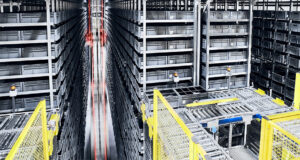WES: Warehouse Operations Management System
WES emerged as a system that bridged the functions of WMS and WCS. Based on the information provided by the WMS, work instructions and progress management in the warehouse are performed. The system enables real-time work instructions, work progress tracking, and dynamic adjustment of work priorities. In addition, WES provides advanced instructions and analytics to streamline processes such as picking, packing, and shipping, optimizing the flow of operations in the warehouse. This allows you to quickly respond to short-term work plans and changes that are difficult to respond to with a WMS.
WES can control machinery and equipment in the warehouse, such as equipment and robots, in real time. With this capability, WES directly links the physical warehouse operation with the instructions of the information system, enabling the efficient operation of machinery and equipment in an automated warehouse environment. This will further automate and improve the efficiency of warehouse operations. WES utilizes advanced algorithms and real-time data to optimize logistics flow and maximize work efficiency. It also enables the automation of physical movements and processes in the warehouse through the control of machinery and equipment, improving the productivity and accuracy of the entire operation.





